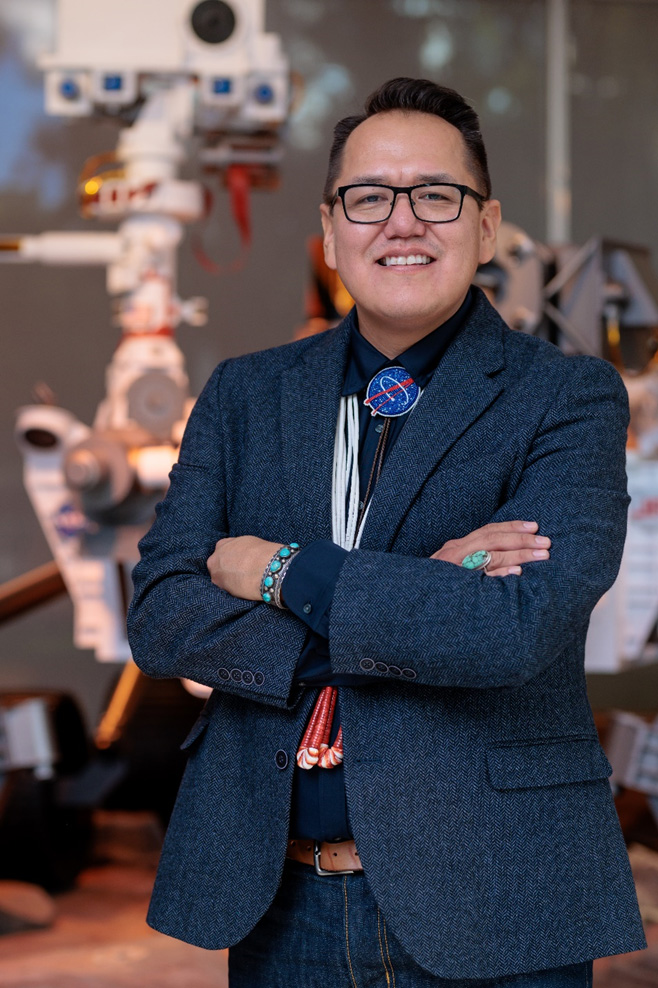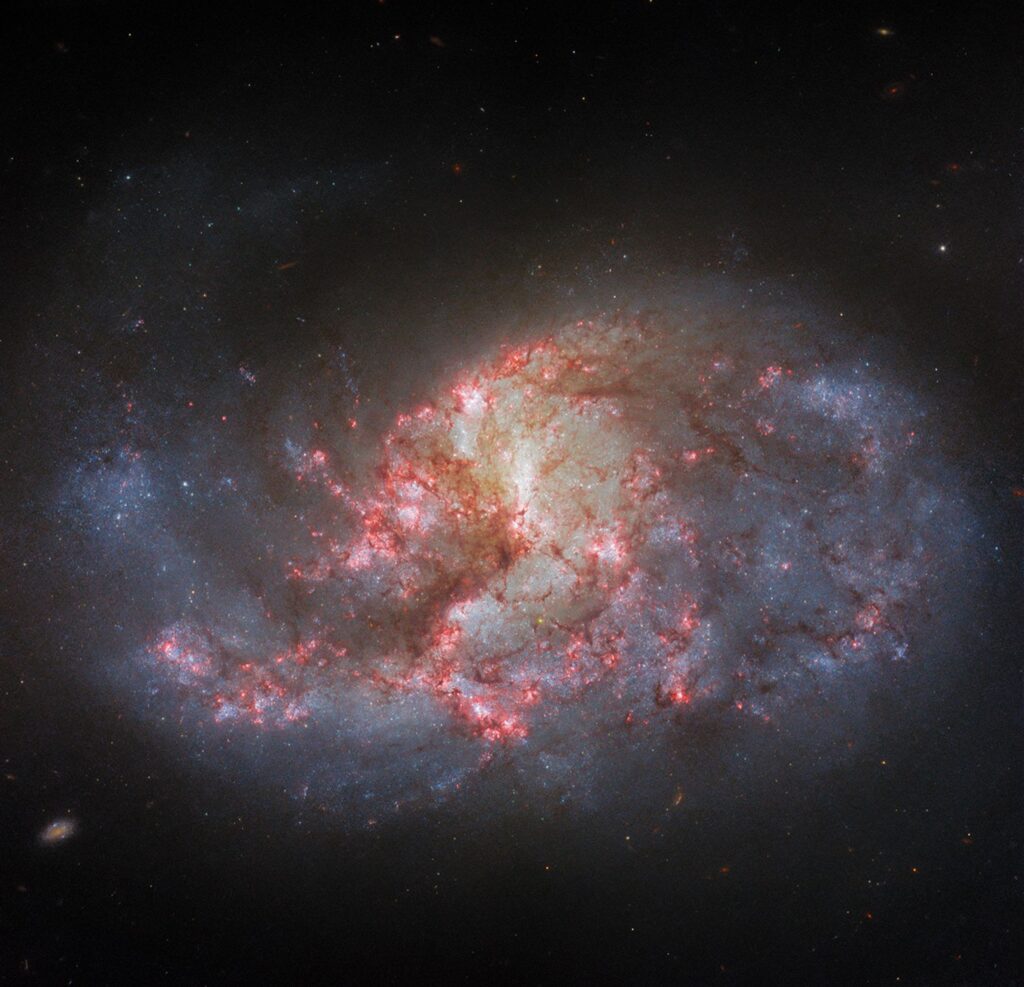4 min read
Preparations for Next Moonwalk Simulations Underway (and Underwater)
Aaron Yazzie’s dream of being part of humanity’s exploration of space took him on a journey from his childhood home on the Navajo Nation to working at NASA’s Jet Propulsion Laboratory (JPL) in Southern California. His journey reflects not only his personal ambition, but also a commitment to elevating Indigenous representation in science, technology, engineering, and mathematics (STEM) fields.
“Getting an internship at NASA was the culmination of a lot of work done by myself, and many of the Indigenous trailblazers that came before me, to make a path and a space for Indigenous peoples at places where there might not have been any Indigenous Peoples in any rooms,” said Yazzie.
Born in Tuba City, Arizona, Yazzie is of the Salt Clan and born for the Bitter Water Clan, which reflect his maternal and paternal lineage, respectively. The Navajo clan system communicates family heritage and where their families come from.
Yazzie’s path to NASA began with a passion for engineering, which he pursued at Stanford University in Stanford, California, where he earned a bachelor’s degree in mechanical engineering in 2008. NASA is a dream job for many, from artists to engineers, and Yazzie was no exception. Securing an internship at NASA’s Jet Propulsion Laboratory in 2008 marked a significant milestone for him, particularly as an Indigenous person in STEM where Indigenous people are underrepresented. Throughout his academic and professional journey, he frequently found himself as the only Indigenous voice in the room with Indigenous people representing less than 0.6% of the American STEM workforce.
Yazzie’s work at NASA is deeply intertwined with his cultural identity. In the Navajo culture, traditional stories tell how the Diné (the people) came to exist in Dinétah (Navajo homelands).
Yazzie’s contributions to missions exploring Mars, including testing the Curiosity Rover’s sample acquisition system and developing drill bits for the Perseverance Rover, resonate with the Navajo creation story, which emphasizes nurturing life on a developing Earth—paralleling his efforts to support the possibility of life on Mars. He approaches his role with a sense of purpose, reflecting on the importance of understanding origins–both of the Earth and of life itself.
“By studying Mars, we learn about how rocky, terrestrial planets, like Mars and Earth, formed over billions of years,” said Yazzie, “And by searching for ancient microbial life on Mars, we might learn how life on Earth originated. I am proud to be doing what my ancestors have been doing before me.”
Emphasizing a commitment to lifelong learning, Yazzie advises future interns to “embrace the opportunities of growth and learning that come with working at NASA.” His advice: learn how to be a good learner. Yazzie’s diverse responsibilities, from test engineer to systems engineer, keep him engaged and continuously evolving.
“I think I am most proud of the outreach work I have been able to do, especially to Indigenous communities,” said Yazzie, “I want to help Indigenous students understand that they can exist and thrive at places like NASA.”
Yazzie’s work has been recognized with awards from NASA JPL, Stanford University, and his own tribe, reinforcing his role as a trailblazer for generations. As he continues to contribute to humanity’s understanding of Mars and its potential for past life, he honors his ancestors by paving the way for a more inclusive future in space exploration. Through his work, Yazzie inspires a new generation of Diné scientists and engineers, proving their voices have an essential place in the story of the cosmos.
Like Yazzie, NASA is devoted to mentoring the next generation of Indigenous doers, thinkers, and innovators. Anyone interested in following his footsteps may consider applying for a NASA Internship. Outside of internships NASA offers numerous routes to help Indigenous students get involved with STEM. Additionally, through NASA’s Minority University Research and Education Project (MUREP), the agency provides financial assistance via competitive awards to Minority Serving Institutions. The MUREP American Indian and Alaska Native STEM Engagement (MAIANSE) program offers funding dedicated to supporting Indigenous students launch their careers at NASA.




